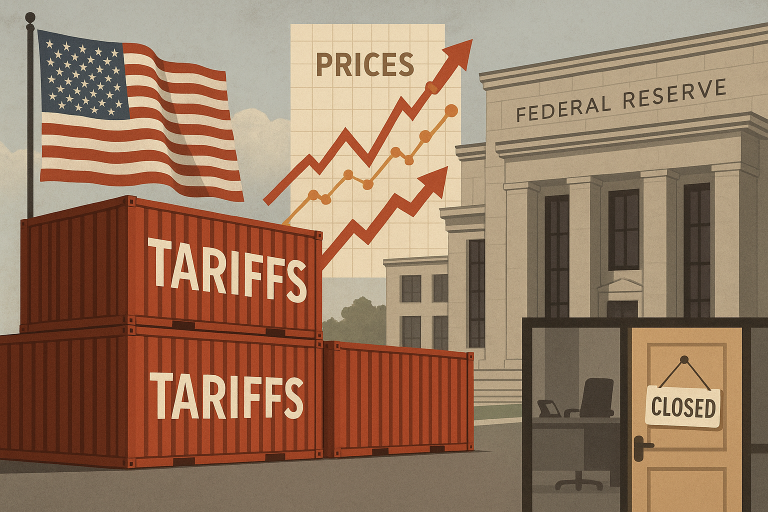The Federal Reserve’s latest Beige Book report indicates that US inflation pressures have intensified as a result of President Donald Trump’s tariffs, which have forced businesses to either absorb higher costs or pass them on to consumers.
The report, released Wednesday, offers one of the most detailed snapshots of the nation’s economic landscape in recent weeks and highlights the growing challenges posed by the ongoing trade war with China and a prolonged government shutdown.
Tariffs driving price pressures
According to the Fed, “prices rose further during the reporting period,” with tariff-induced cost increases reported across many of the central bank’s 12 districts.
The Beige Book, which is compiled eight times a year, found that while the overall pace of economic growth “changed little” since the previous report on September 3, pricing dynamics have shifted notably.
Companies across several sectors reported being squeezed between absorbing higher input costs and raising prices.
Some firms have chosen to keep prices stable to stay competitive and retain inflation-sensitive customers, while others have passed the added expenses directly to consumers.
“Tariff-induced input cost increases were reported across many districts,” the report noted, though the degree of price pass-through varied.
In certain regions, slowing demand has even led to lower material prices, suggesting a fragmented inflation picture shaped by both trade policies and uneven consumer activity.
The report arrives as Trump’s trade war with China intensifies.
Beijing recently imposed restrictions on rare earth materials — critical to technology and defense manufacturing — prompting Trump to threaten 100% tariffs on Chinese imports in retaliation.
Economic growth and labor market hold steady
Beyond inflation concerns, the Beige Book characterized economic growth and labor conditions as broadly stable.
Demand remained “muted” in most districts, while labor markets showed little change, suggesting that the US economy is maintaining a slow but steady pace despite policy headwinds.
The central bank’s regional reports pointed to modest consumer activity, with spending nudging lower in recent weeks.
However, the Fed observed a clear divide between income groups: upper-income households continued to spend robustly on luxury goods and travel, while middle and lower-income consumers were increasingly focused on discounts and promotions.
Future expectations appeared cautiously optimistic in some districts, though the Philadelphia Fed reported concerns that a prolonged government shutdown could dampen sentiment further.
Shutdown limits economic data flow
The Beige Book’s release comes amid a three-week government shutdown, which has curtailed the flow of key economic data from agencies like the Labor and Commerce departments.
The lack of fresh figures has complicated assessments of inflation, employment, and overall economic momentum ahead of the Federal Open Market Committee (FOMC) meeting scheduled for October 28–29.
However, some relief is in sight.
Workers at the Bureau of Labor Statistics (BLS) have been called back to prepare the Consumer Price Index (CPI) report — a crucial measure of inflation and a key determinant of cost-of-living adjustments for Social Security recipients.
The CPI data, initially due this week, will now be released on October 24, marking the Fed’s final inflation reading before its policy meeting.
While the Beige Book points to steady growth and stable employment, its findings underscore the inflationary effects of tariff policy — a factor that could complicate the central bank’s next steps as it weighs the balance between supporting growth and curbing price pressures.
The post Trump’s tariffs add to inflation pressures, Fed says in Beige Book report appeared first on Invezz

